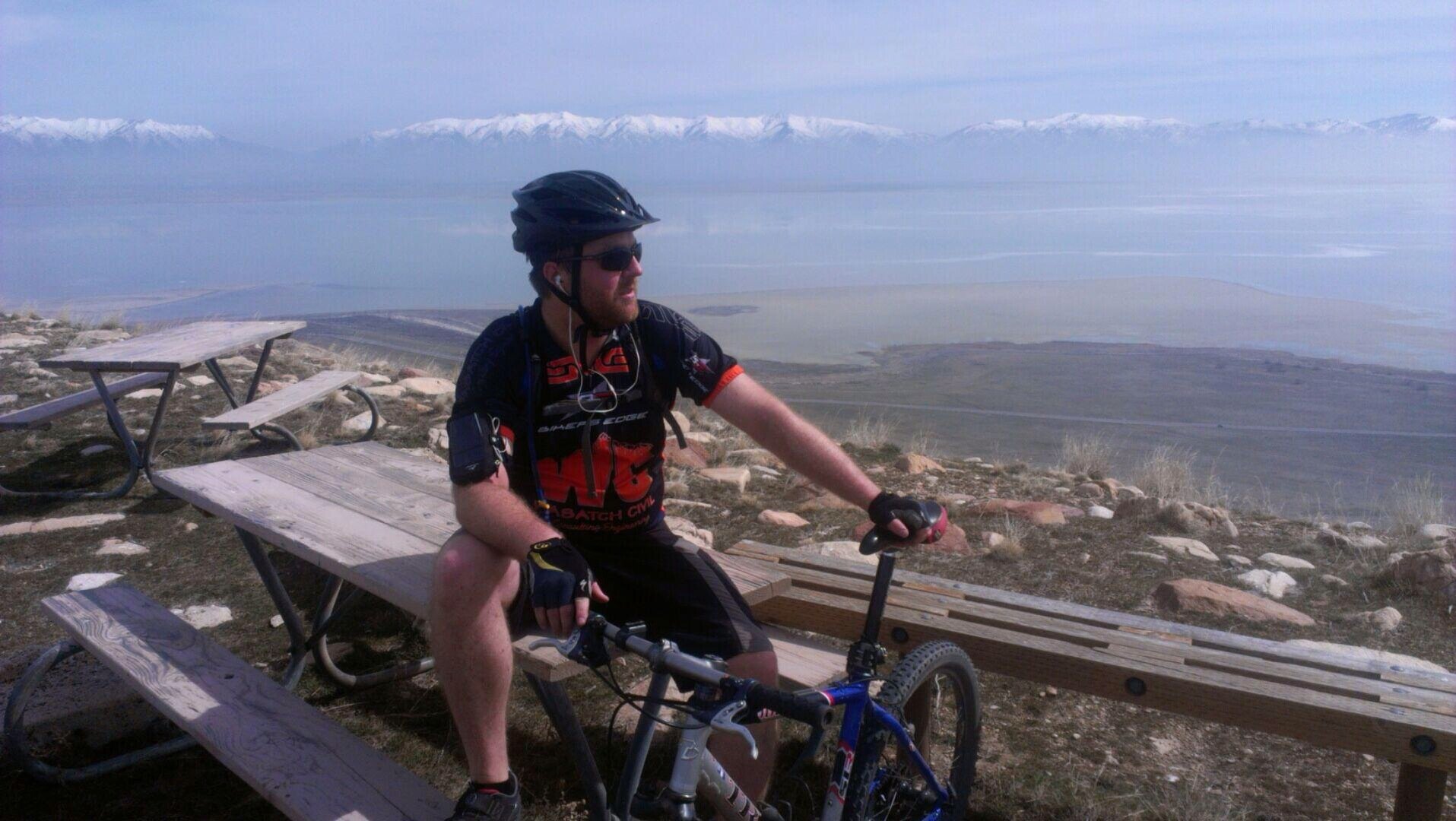Advocate of the Month: Charlie Ewert
Utah is home to many community bicycling advocates, who dedicate time and energy to making riding in their cities and neighborhoods more safe and accessible. Bike Utah is excited to highlight an advocate each month, with the goals of recognizing their work, connecting with more community members, and inspiring new advocates to take action!
Occupation: Principal Planner, working in the Weber County Planning Department.
Associated Group: Weber Active Transportation Committee (WATC)
Position: Chair
What is/was your favorite bike?
I love my old Specialized Stumpjumper Pro. But when I have a need for speed I’ll grab my Specialized Tarmac and hit the pavement.
Where is your favorite place to ride in Utah?
My favorite place to ride is season-dependent. In the Winter, Spring, and Fall, I love a weekend trip to Moab. The Porcupine Rim is my favorite ride down there. Winter also often lends to decent riding on Antelope Island, provided it’s either dry or frozen. But in the heat of the summer you cannot beat the trails on the backside of Mount Ogden or on the top of Powder Mountain.
When riding with the kiddos, the Ogden River and Weber River Parkways lend to a safe and simple roll through town, with a ton of opportunities to jump off and grab a bite or detour to Downtown Ogden.
What future projects do you hope to see happen?
I eagerly await the day a paved pathway runs up the Ogden Canyon and connects to the Pineview Loop Pathway.
Do you consider yourself to be a bicycle advocate?
Absolutely. Whether it be less traffic, less air pollution, more exercise, more accommodating infrastructure, heightened awareness, lower transportation costs, or just the general opportunity to explore, communities cannot reach maximum potential for providing a superior quality of life without more people on bikes.
What is the most important piece to the puzzle to make riding safer in your community?
I want to say lack of bicycle-friendly infrastructure, but the reality is that infrastructure designed to better accommodate bicycles is a response to poor driver-awareness. If every driver could spend more time traveling by bicycle, their understanding of a cyclist’s safety needs will change, and their driving habits will quickly follow in a manner that lends a more harmonious sharing of street rights-of-way.
Even a simple white stripe on the asphalt and a bicycle sign can give a driver that heightened mental queue that there is space on that road for bicyclists.
What do you find most difficult about doing your work?
Ignorance. I don’t mean that word pejoratively, either; but rather by its true definition. I have found through my work with local decision-makers that many in leadership are more than willing to consider the cost of adding bicycle infrastructure when considering the construction or reconstruction of streets.
However, it is quite easy to only see a street for the cars it will serve, as cars are the dominant mode of travel in our communities. All-to-often, bicycle infrastructure is simply overlooked as a casualty of a car-centric culture, and not by willful neglect by leadership.
What do you do to overcome those difficulties?
Diplomacy is key. While pitchforks and torches can ignite immediate action, it does not create long-term sustainable change. I have a great relationship with the personnel in the Engineering Division here in Weber County. We are making incredible strides toward implementing better consideration for active transportation facilities in our day-to-day work.
Disagreements do occur. However, rather than taking positional contrarian stances against the other’s opinions, we strive to work together to best understand the interests of the other, and then find the most reasonable ways in which both interests can be executed. After all, our most important common interest is working for the betterment of those we serve.
What advice do you have for someone who wants to get involved with bicycle advocacy, but has no idea where to start?
Social media can help get you started. Look for local bicycle groups and subscribe to their feed.
If the event that proves too challenging, I suggest contacting a community planner in your jurisdiction. Some of the smaller jurisdictions might not have a planner on-staff, so you may need to call more than one jurisdiction in your area. A local planner should be able to point you to local advisory groups, non-profit, or committees. If that fails, look up the number for your local metropolitan planning organization (MPO). They have active transportation planners who can guide you to local groups of interest.
And last, obtain a copy of your jurisdiction's transportation plans and familiarize yourself with them. Call the planning or engineering office to discuss forthcoming projects, or to discuss projects in the plan that interest you. From there you can become informed enough to effectively interface with your elected leaders. In my experience, a phone call to them is the best form of advocacy.
Do you have a follow-up question for Charlie? Would you like more info about your local bicycling advocacy group or have a specific active transportation project you’d like to see initiated? Do you know an advocate we should highlight? Email info@bikeutah.org!



